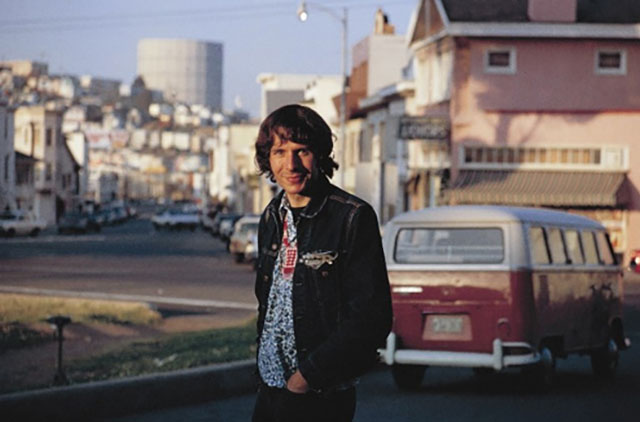
Alain Dister
Alain Dister is a French journalist, author and photographer born on 25 December 1941 in Lyon. In the early 1960s he covered the emerging rock scene in America for French magazines such as Rock & Folk. Dister was one of the first European photographers to join the Haight Ashbury scene in San Francisco and cover the Summer of Love. In the 60s and 70s, he specialised in the counter-culture and Beat Generations movements. Alain Dister died on 2 July 2008 in Paris.
By his own account, he became interested in photography around the age of 18 in the early 1960s. He began photographing musical and cultural events, including jazz concerts and fashion.
In 1966, he went to the United States as a columnist for the newly founded French magazine « Rock & Folk » to discover the emerging scenes. In New York, he met Jimi Hendrix at the Café Wha under the name Jimmy James and the Blue Flames. He decides to drive to California, where he meets, among others, Frank Zappa and the Beach Boys. Settled in California in San Francisco in the Haight-Ashbury district, he lives in the house of Jerry Garcia of Greatfull Dead, he frequents the Family Dog collective and the main authors and artists of the Beat Generation, including Allen Ginsberg and Gregory Corso. He had a front row seat to witness the Summer of Love, the hippie movement and the Beat Generation.
Returning to France in 1969, Alain Dister continued his career as a photographer and journalist for various magazines and newspapers in France and England. He exhibited his photographs for the first time in 1973 at the Museum of Modern Art in Paris in the exhibition « Séquences et Conséquences ». He then produced radio programs for France Culture and documentary films, in particular for the television program « Les enfants du rock » in the 1980s.
His photographic vision is always oriented towards youth and movements linked to the counter-culture. He follows in particular the punk movements in France and in England and in Japan. He continues to photograph the stage, but his lens no longer focuses on the musicians, but rather on the young spectators in particular.
From the middle of the 90s, he devoted more time to writing. He publishes many books related to his photography and his career. In 2001, in his book « Oh, hippie days ! Carnets américains 1966-1969 », he will come back on his American experience of the 60s by telling the memories of this period made of experimentations, wandering and utopia.
Today, his photographic collection is showcased by the Association Alain Dister.